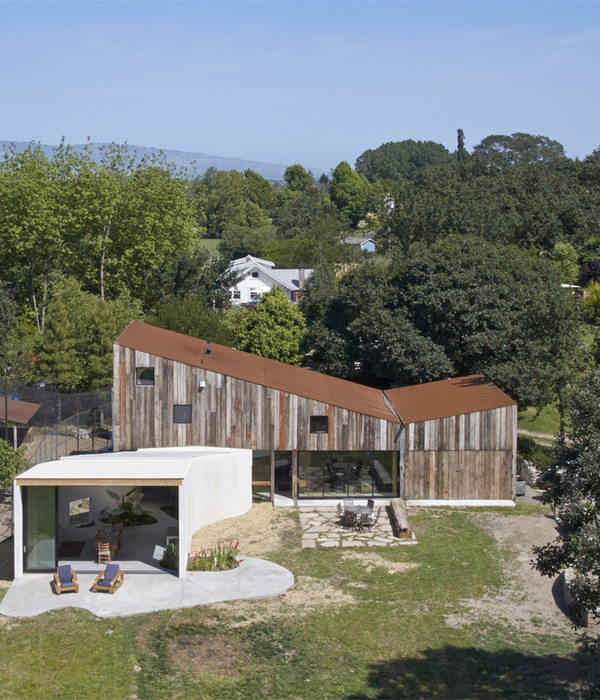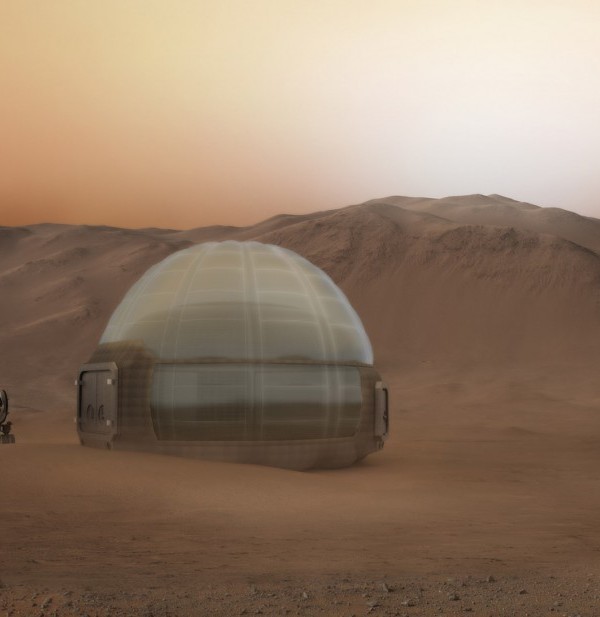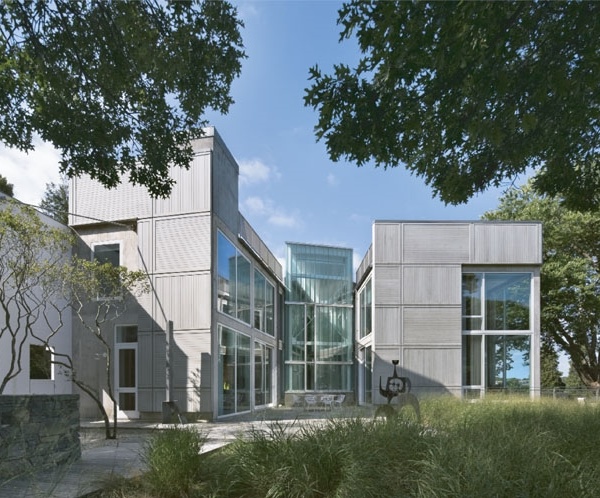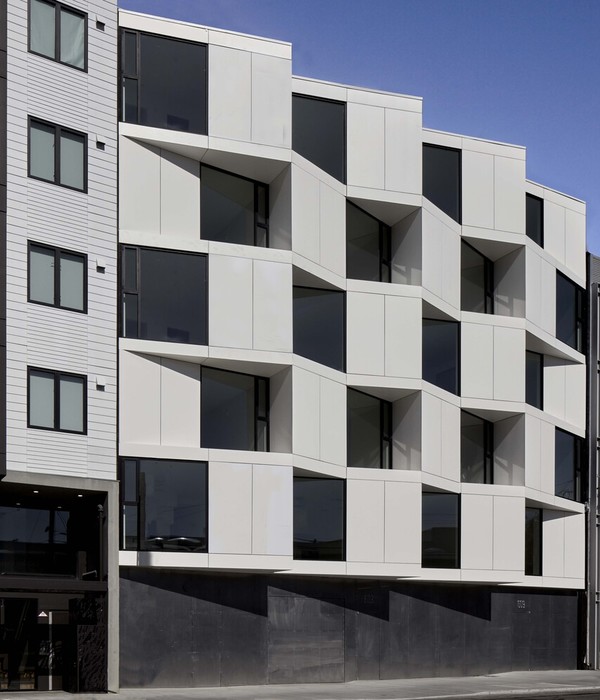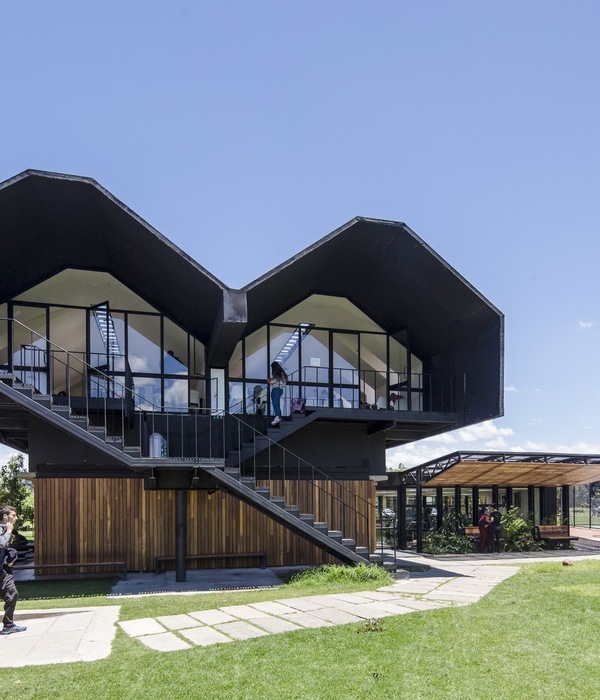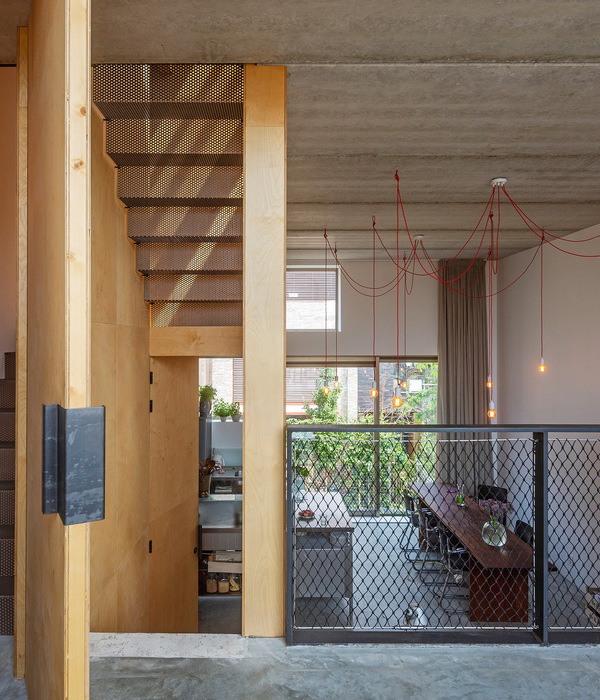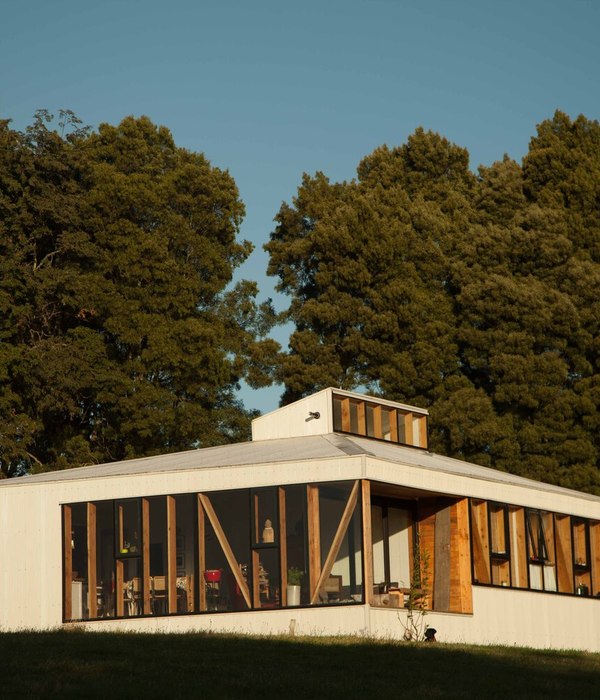Architects:A for Architecture
Area :3900 m²
Year :2019
Photographs :Hemant Patil
Landscape Design :Suman Shilp, A for Architecture
Design Team : Ajay Sonar, Monali Patil, Tejas Pai, Sushil Sakhare
Clients : Viveda Wellness Retreat
Landscape : Monali Patil (a for architecture), Mahesh Nampurkar (Suman Shilp)
Text By : a for architecture and Shreyank Khemalapure
City : Trimbak
Country : India
Context. One of the most striking features of the site is its setting. The site is situated between the gigantic Sahyadri mountain range, the mesmerizing waters of the Gautami Godavari dam, and a mosaic of multi-toned farmlands, sporadic trees, cattle, cows, buffaloes, sheep, goats,s and so on.
The region has a hot and dry climate, especially during summers, but enjoys pleasant monsoons and winter conditions. The first intention of the project was to design spaces that responded to this setting. Most of the spaces are designed to create shade with minimum walls to allow maximum natural light and ventilation. All the buildings are perforated with courtyards and green pockets making the project breathable and decreasing the ambient temperature and adding the necessary moisture required in a hot and dry climate.
Materiality. The second intention of the project was to understand and incorporate building practices from the Beze village and surrounding settlements. Typically, houses here have a stone plinth, timber framework, brick or mud walls and clay pot tiles for roofing. Construction activities, like most other activities are seen as a cooperative set of activities and form of mutual exchange of skills, labour and resources. For instance, a mason builds a house for a farmer who in turn pays him back in grains or by offering other skills. To that extent, the project is designed with three materials: Basalt Stone, Timber frame and pot-tile roof. Since the project is in a remote location, it helped to employ and collaborate with the local craftsmen who have a long lineage of working with these materials. Concrete and steel are consciously kept to a minimum in the project. All materials have been sourced locally (within 20 to 50 km), reducing the embodied energy.
Stone: The stone work on the site was mainly carried by the Wadari community. The Wadari caste, especially in the rural economy, are a community of expert stonemasons particularly settled in Maharashtra and Northern Karnataka belt of India. Basalt stone, available in plenty in the region, is hand-quarried, chiseled and fitted on site by the stonemasons. Most of the project is made with Basalt -load-bearing walls, steps, courtyards, landscape etc. This is done to deliberately create a monolithic character for the building, like a solid stone mould sitting gently on the landscape.
Wood: There are two kinds of timber that are used in this project: 1) Haladu (yellow toned timber, which derives its name from Haladi or turmeric. This is primarily used for the roofing system and columns in certain spaces. 2) Upcycled Wood – Indian teakwood, salvaged from 100 to 150 old dilapidated buildings in the region. Majorly done by local carpenters headed by a sutar, who is a master-carpenter, carrying his skills through generations.
Clay Pot Tiles: Clay pot tiles, which are used for roofing are made by a kumbhar (from the potter community) using the traditional methods learnt over decades usually within the community itself. The changing economy and building practices in the villages narrowed their practice down to only pot making. This was the largest consignment of pot tiles the kumbhar had ever received. As the kumbhar involved various family members and other villagers in the process, it became a good economic opportunity for the community.
Spatiality. Spatially speaking, the project intends to deliberately invoke a sense of inhabiting the historically prominent architectural types of the region. Historically speaking, several political and spiritual practices have left their architectural traces in the landscape of Sahyadri hills and Trimbekashwar. Among which the fascinating ones are the medieval forts -typically built on top of the mountains; Wadas -beautifully crafted medieval houses of the rich merchants; Kunds -subterranean water bodies popular since the Harappan cities but explicitly seen in the temple towns across the regions; Chaityas -the beautiful and tedious Buddhist caves and monasteries; Ghats - the sacred river-front stretches of steps leading to various rivers where architecture and landscape becomes one. Each of these building types have a very specific and memorable spatial quality which the project invokes in various parts.
For instance, in the amenities block, made of five squares, each of the squares is designed separately with five different functions and a corresponding spatial quality: Naturopathy cluster as Wada; Massage rooms as courtyard houses; yoga and meditation dome as Chaityas; Swimming pool as Kund; and the amphitheatre and restaurant as ghats. The five squares are merged into one long block, with specific transition spaces, to create a spatial sequence with different volumes, qualities of light and shadow, textures and movement patterns that are learnt from the above mentioned architectural types, from the region, and an in-depth understanding of the respective functions. One of the results of such an approach is that it creates a heterogeneously homogeneous space.
The guest rooms are mainly conceived as clusters from a small settlement with winding streets and courtyards. Each cluster is organized as a circle, freely placed on a natural sloping ground to create a meandering path around all the clusters at different levels. The common court shared by four cottages becomes a social space for the guests to interact with each other and enjoy the distant views of the landscape, sitting in their verandahs.
The monolithic character of the buildings also helps in framing a continuous contrast between the landscape, the sky, and the space of the building, thereby always pushing the attention of the person from the building to the landscape, the environment around and perhaps even to oneself.
▼项目更多图片
{{item.text_origin}}


